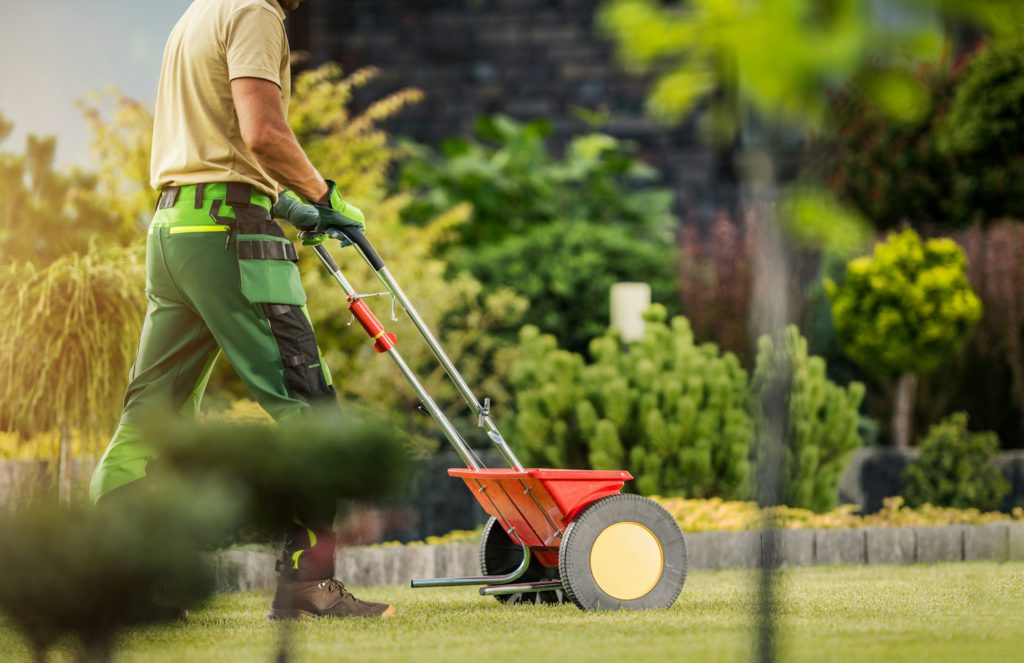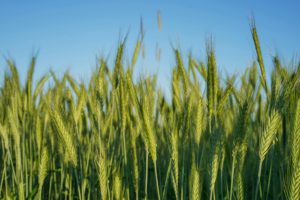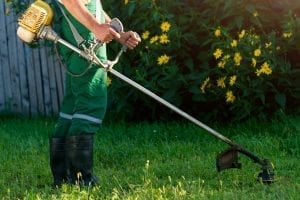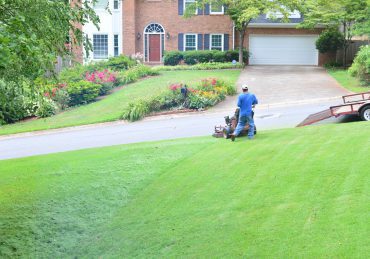Maintaining a well manicured, green lawn requires more maintenance than your regular mowing and watering; fertilization plays a critical role in ensuring healthy growth. Knowing when you should fertilize your lawn and the best practices to follow, you can achieve vibrant, resilient turf. Here we’ll explore the best time to fertilize your lawn, taking seasonal changes into account and how to avoid common mistakes.
Understanding Lawn Fertilization
Fertilization is an essential component of effective lawn care, providing the nutrients that grass needs to thrive. Without proper fertilization, lawns can become thin, discolored, and susceptible to weeds and pests. By understanding the importance of fertilization and how it benefits your lawn, you can create a vibrant, green landscape.
What is Lawn Fertilization?
Lawn fertilization is the process of applying nutrient-rich substances to the soil to promote growth of healthy grass. Fertilizers typically contain essential nutrients such as nitrogen (N), phosphorus (P), and potassium (K).
Lawn fertilization replenishes the soil with vital nutrients and ensures that grass has the resources it needs to grow thick and strong. Fertilization helps prevent common lawn problems such as thinning, yellowing, and weed invasion. Additionally, properly fertilized lawns are better equipped to withstand stress, resist pests and diseases, and recover more quickly from damage.
The Science Behind Fertilization Timing
The optimal timing for lawn fertilization is determined by a few scientific principles, primarily soil temperature, nutrient absorption, and grass growth cycles. Soil temperature plays a critical role because the nutrient uptake by grass roots is most efficient when the soil is neither too cold or too hot. For cool-season grasses, this typically ranges between 55°F and 65°F and 70°F and 90°F for warn-season grasses. Within these temperature windows, the grass is actively growing, allowing it to absorb and utilize the nutrients effectively.
Additionally, understanding the grass growth cycles is essential as cool-season and warm-season grasses thrive in seasons specific to their climate. Cool-season grasses thrive in the cool temperatures of spring and fall. Warm-season grasses thrive in the warmer months, so late spring and summer. Fertilization during these growth periods ensures that the nutrients are used to promote healthy growth, robust root development, and increased stress resilience.

When Should You Fertilize Your Lawn?
The optimal times to fertilize your lawn depends mainly on the type of grass you have and the climate you live in. Timing your fertilization correctly ensures that the grass can absorb and utilize the nutrients most effectively. Fertilizing during active growth periods helps promote strong root systems, healthy grass development, and overall lawn resilience. Conversely, fertilizing at the wrong such, such as during dormancy, can lead to nutrient waste, runoff, and potentially harm the grass. By aligning fertilization with the natural growth cycles of your grass type and climate, you can easily achieve a healthy, vibrant lawn.
How Climate Affects Fertilization Timing
The best times to fertilize cool-season grasses are in early spring and fall. In the early spring, when the soil temperatures reach 55°F, the grass begins to come out of dormancy and starts to grow. A spring application helps boost early growth. Fall is a great time to fertilize as well because of the cooler temperatures and increases rainfall. Additionally, fertilizing in the fall helps the grass build up energy reserves for the winter.
Warm-season grasses grow best in warmer temperatures. The ideal times to fertilize these grasses are late spring and summer. As soil temperatures rise to about 70°F, these grasses enter their peak growing season. Fertilizing in late spring supports their active growth phase. Additionally, another application mid-summer can help maintain the lawn’s health and resilience through the hottest months of the year.
Identifying Your Grass Type
Identifying your grass type is a crucial first step in determining the correct fertilization schedule, as different grasses have unique growth patterns, nutrient requirements, and optimal fertilization times. To identify your grass type, observe the blade shape, texture, color, and growth of your lawn. Cool-season grasses like Kentucky bluegrass, fescue, and ryegrass typically have fine, soft blades and thrive in cooler temperatures with peak growth in spring and fall. Warm-season grasses like Bermuda, St. Augustine, and zoysia have coarser blades and flourish in warmer climates, with peak growth in late spring and summer.
Accurate identification allows you to tailor your fertilization schedule to the specific needs of your grass, ensuring that the nutrients are applied during active growth periods for maximum effectiveness. This targeted approach promotes a healthier, more resilient lawn.

Best Practices for Fertilizing Your Lawn
For optimal lawn fertilization, it’s important to follow the best guidelines and practices for fertilizing your lawn. This includes understanding how to prepare your lawn, the best application techniques, and proper post-application care. Start with soil testing to identify the nutrient needs and choosing the appropriate fertilizer. Prepare by mowing and lightly watering your lawn a day before application. Calibrate your spreader for even distribution to avoid overlaps and missed spots. After fertilizing, water your lawn thoroughly to help nutrients penetrate the soil, and clean up any fertilizer on hard surfaces to prevent runoff. Lastly, monitor your lawn’s growth and adjust your fertilization schedule as needed for a healthy, lush lawn.
Choosing the Right Fertilizer
There are two main categories of fertilizers to choose from: organic and synthetic. Organic fertilizers are derived from natural sources such as compost, animal manure, or plant-based materials. They release nutrients slowly as they decompost, enriching the soil with organic matter and improving long-term soil health. Synthetic fertilizers are manufactured to deliver nutrients in a readily available form. They typically contain nitrogen (N), phosphorus (P), and potassium (K), allowing for quick absorption by plants.
Within both categories, fertilizers can be further classified as slow-release or quick-release. Slow-release fertilizers provide nutrients gradually over an extended period of time. This reduces the risk of nutrient leaching and minimizing the need for frequent applications. Quick-release fertilizers deliver nutrients rapidly, making them ideal for correcting immediate deficiencies or stimulating rapid growth.
When choosing the best fertilizer for your lawn, consider your grass type, soil conditions, desired growth rate, and environmental impact. Organic fertilizers are preferable for enhancing soil health and sustainability, while synthetic fertilizers offer precise nutrient control and fast results. Slow-release fertilizers are suitable for steady, long-term feeding, whereas quick-release options are effective for addressing specific growth needs.
Preparing Your Lawn for Fertilization
Preparing your lawn before applying fertilizer involves several key steps to ensure effective nutrient uptake and healthy growth. Start by mowing your lawn to a moderate height a few days before fertilization. This helps ensure an even application of fertilizer and prevents excessive stress on the grass blades. Next, lightly water your lawn the day before fertilizing to moisten the soil, aiding in nutrient absorption. Conduct a soil test to determine nutrient deficiencies and pH levels, which guides you in selecting the appropriate fertilizer type and application rate. By following these steps—mowing, watering, and soil testing—you set the stage for optimal fertilizer uptake, promoting robust root development and vibrant turf throughout the growing season
Applying Fertilizer Correctly
To apply fertilizer evenly and effectively, begin by calibrating your spreader according to the manufacturer’s instructions. Divide the fertilizer into two equal parts to ensure thorough coverage. Apply the first half walking in one direction (e.g., north to south), then apply the second half walking perpendicular (e.g., east to west). This crisscross pattern helps prevent missed spots and ensures uniform distribution. Be mindful not to overlap excessively, as this can lead to over-fertilization and potentially harm your lawn. Similarly, avoid leaving gaps between passes to prevent under-fertilization. By applying fertilizer evenly and following these guidelines, you promote balanced nutrient uptake across your lawn, fostering healthy growth and minimizing environmental impact.
Seasonal Lawn Fertilization Guide
Fertilizing throughout the seasons requires understanding the specific needs of your lawn and adapting to the season accordingly. In spring, focus on promoting new growth after winter dormancy. Summer calls for caution as the excessive heat can stress grass. Fall fertilization is crucial for strengthening roots and storing nutrients for the winter. Winter fertilization is generally unnecessary but in milder regions, a light application of fertilizer can help maintain overall lawn health. Adjusting fertilizer types and application rates based on seasonal demands ensures your lawn receives optimal nutrition year-round, promoting lush, resilient turf.

Spring Fertilization Tips
Spring fertilization is crucial for jumpstarting growth after winter dormancy and setting the stage for a healthy lawn. A fertilizer high in nitrogen will be the best option to promote growth. It’s important to time your fertilization correctly as well. Fertilizing too early or too late will decrease how effective the treatment is. Apply fertilizer early spring when soil temperatures are around 55°F. A slow-release fertilizer during this time is beneficial as it will provide a steady nutrient supply over several weeks. During spring especially, it’s important to avoid fertilizing during periods of excessive rain to prevent leaching and runoff.
Summer Fertilization Strategies
Fertilizing in the summer requires extra consideration due to challenges caused by heat and potential droughts. During this season, focus on maintaining lawn health rather than stimulating further growth. A balanced fertilizer will be beneficial as it include nitrogen and potassium for stress tolerance and root development. A slow-release formula is the best option for summer fertilization as it will provide the nutrients gradually and minimize the risk of fertilizer burn, especially during spells of drought. Apply fertilizer early in the summer to support steady growth and resilience against heat stress. Additionally, it’s important to ensure property watering after fertilization to help nutrients to reach the roots effectively and to prevent the lawn from drying out. As summer goes, monitor your lawn and adjust your fertilization regiment as needed to ensure your lawn has the nutrients it needs to thrive.
Fall Fertilization Best Practices
Proper fertilization in the fall is crucial in preparing your lawn for the winter months. For this round of fertilization, choose a fertilizer with a higher ratio of phosphorus and potassium to encourage root growth and nutrient storage. This combination helps the grass build up reserves that will support it through the winter months. When temperatures are still mild early to mid-fall, apply your fertilization. A slow-release fertilizer will be beneficial as it provider nutrients gradually, ensuring they are available over an extended period of time. Avoid fertilizing too late in the fall as it promote late-season growth that is susceptible to winter damage. As with every fertilization session, ensure your lawn is receiving adequate watering to help the nutrients penetrate the soil and reach the roots.
Common Mistakes to Avoid When Fertilizing
Common mistakes when fertilizing your lawn often stem from improper timing, application techniques, or product choice. One of the most frequent errors is over-fertilization, which can lead to nutrient runoff, environmental pollution, and lawn damage. To avoid this, always follow recommended application rates and schedule fertilization based on your grass type and regional climate. Another mistake is using the wrong type of fertilizer or applying it at the wrong time of year. It’s crucial to conduct a soil test to determine nutrient deficiencies and select a fertilizer that matches your lawn’s needs and growth stage. Additionally, uneven application can result in patchy growth or burn spots. Calibrate your spreader properly and apply fertilizer in a crisscross pattern to ensure even coverage. Lastly, neglecting post-application care, such as watering, can hinder nutrient absorption and effectiveness. Water your lawn lightly after fertilization to help nutrients reach the roots and avoid runoff. By being mindful of these common pitfalls and adopting best practices, you can ensure effective fertilization that promotes a healthy, vibrant lawn year-round.
Over-Fertilization Risks
Over-fertilization poses risks to your lawn’s health and the environment, often resulting in nutrient runoff, water pollution, and damage to plants. Signs of over-fertilization include excessive foliage growth, discoloration (often appearing as burnt or yellow patches), and increased susceptibility to pests and diseases. If you suspect over-fertilization, immediate action is necessary to mitigate further damage. Begin by thoroughly watering your lawn to help flush excess nutrients through the soil. Avoid fertilizing again until the next recommended application period, and when you do, opt for a lighter application at reduced rates. Consider using a slow-release fertilizer to provide nutrients gradually and reduce the risk of overwhelming your lawn. Monitoring your lawn closely for signs of recovery, such as improved color and reduced stress, will guide further adjustments in your fertilization regimen. Taking these steps promptly can help restore balance and promote healthier growth in your lawn over time.
Under-Fertilization Consequences
Under-fertilization can lead to weak, sparse growth and leave your lawn vulnerable to weeds, pests, and environmental stressors. Signs of under-fertilization include pale or yellowing grass, slow growth, and overall poor lawn health. To ensure your lawn receives adequate nutrients, start by conducting a soil test to identify any deficiencies and adjust your fertilization schedule accordingly. Choose a fertilizer that matches your grass type and the specific needs indicated by the soil test results. Follow recommended application rates and timings based on the growth cycles of your grass, ensuring nutrients are applied during active periods of growth. Consider using slow-release fertilizers to provide a steady supply of nutrients over time, minimizing the risk of nutrient deficiencies. Regular monitoring of your lawn’s health and adjusting your fertilization regimen as needed will help maintain a lush, resilient lawn that thrives throughout the season

FAQs About Lawn Fertilization
Navigating the realm of lawn fertilization can raise a multitude of questions and concerns for homeowners. From determining the best timing and type of fertilization to understanding the environmental impact and optimal application techniques, the process can seem complex. Addressing these inquiries ensures that fertilization efforts not only enhance lawn aesthetics but also promote sustainability and long-term health. Let’s dive into some common queries and considerations surrounding lawn fertilization to demystify the process and empower effective lawn care practices.
When Should I Fertilize My Lawn?
You should fertilize your lawn based on the specific needs of your grass type and regional climate. Generally, cool-season grasses benefit from fertilization in early spring and fall, while warm-season grasses thrive with applications in late spring and summer. Timing is crucial to support active growth and resilience against seasonal stresses.
When is the Best Time to Fertilize Your Lawn?
The best time to fertilize your lawn depends on whether you have cool-season or warm-season grasses. For cool-season grasses, the best times are early spring and fall. For warm-season grasses, late spring and summer are ideal. Timing ensures nutrients are available when the grass can use them most effectively for healthy growth.
Signs Your Lawn Needs Fertilizer
You should fertilize your lawn in early spring and fall for cool-season grasses, and in late spring and summer for warm-season grasses. This timing aligns with the grass’s growth cycles for optimal nutrient uptake and health.

Lawn Mowing Cost Calculator
Not sure what you’ll pay to get your grass cut? Use the calculator below to get an instant estimate based on your yard size and mowing needs. Try the Calculator

How Early Is Too Early to Mow the Lawn?
You’re standing at the window with coffee in hand. The sun’s barely up, and you’ve got a packed Saturday ahead. The mower’s ready. The lawn’s shaggy. The only thing stopping

How Much Does Landscaping Cost in 2025?
Walk through any neighborhood in spring and you’ll spot it: one yard looks like it belongs on a magazine cover, while the next has patchy grass and a tilted mailbox.

Winter Grass Care Guide
When your lawn stops growing, it’s not dead, it’s waiting You mow less, see fewer weeds, and maybe breathe a little easier in December. But if you’ve ever looked out

What is Weed Whacking and Why It Matters
Weed whacking means simply cutting down grass and weeds in spots a mower can’t reach using a handheld tool. A weed whacker is a crucial piece of equipment to have

What is Peat Moss?
You’ve probably seen it stacked in bags at the garden center, usually next to seed-starter kits or potting soil blends. But if you’ve ever paused and wondered, “What is peat





